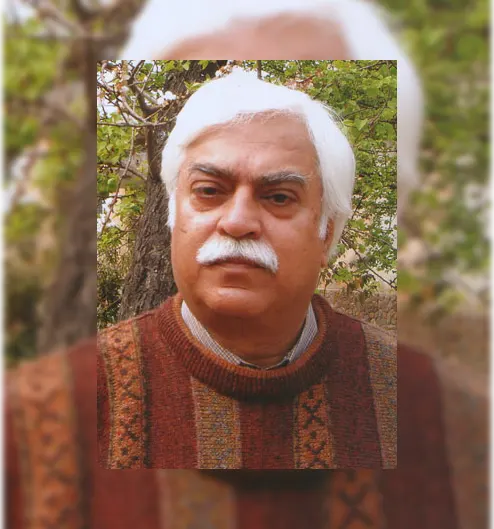Zubair Qureshi
Mazharul Islam is a celebrated story writer of Pakistan and his novels and short stories are widely popular with the readers not only in the country but also in all those parts of the world where Urdu-speaking people live and read books. He has been translated into many foreign languages and received Pride of Performance (Literature).
Recently, Islam’s novel “Sarus Crane Apnay Khwabon mein se Urh kar ja Chukay Hain” or as one may translate it “Sarus Cranes have flown out of their Dreams” has become a talk of the town and is a subject of never-ending debate.
Of many reasons that make the novel popular, one is obvious that he never drifts along the waters and has always created his own path. The second and equally important is that it is the first-ever ‘time travel’ novel in Urdu literature. It takes the reader down the ages, for instance, from the contemporary 21st century to 18th century and shows how rich the traditions of the past were and how deeply people felt about love, art, books, birds and music.
The novel in a way is a frank commentary on the redundant and superficial life of today and the longer the protagonist (a man-turned sarus crane) flies into the past, the more he realizes that the pure relations are dying and falsehood is prevailing in society.
“The novel is in fact a blend of reality, fantasy, time travel and surrealism,” said Mazharul Islam adding he has tried to weave all these ingredients into one romantic chord. And he is successful in this as the reader while going through the 169-page book finds glimpses of ancient traditions of mystics, Hafiz and Rumi, anecdotes of the holy saints, references to Bible and Quran, mention of Greek and Mughal Sultans (how they endeared Sarus Crane and other birds of its clan and considered them messengers of love, purity and wisdom). For time travel, Mazhar has used the ancient means, one that Sufis used i.e. dream. Through dream the protagonist, a modern man of the 21st Century turns into a sarus crane and sets off on a long journey in search of his ladylove who is waiting for him in the 18th Century.

The protagonist during his flight through ages comes across different times and cities and learns about the people’s views, lifestyle, habits and temperament.
Islam, as is he known for, uses quite unique unusual names, symbols and metaphors which strike rightly at the heart of the readers and brings home his point of view without saying it all. Some of these are like, “Apahaj Logon Ka Shehr” or “Disabled People’s City” “Ashiana-e-Wafa” “Yad Mahal” “Phool Gali” “Atar Gali” “Sukh Chain Gali” “Parinda Gali” and “Darvesh Gali” etc.
“Sarus Crane” has gone ahead of my first novel “A Symphony of Dead Flowers” not only in terms of creative freedom but also due to the wide range of subjects that have been discussed here, said he. The author has dedicated the book to Chairperson of the Parveen Shakir Trust, Parveen Qadir Agha, Rana Seerat, Nargis Sethi, Saleem Sethi, Seerat Asghar and Dr Rauf Niazi. Published by Sang-e-Meel, the book is available at the bookstores for Rs1600/-.










